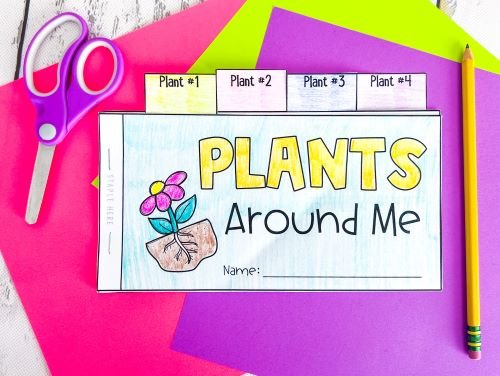Animal and Plant Adaptations - Science for Kids
I don’t think there’s anything I like more than a day at the aquarium. We are lucky enough to get to visit the Vancouver Aquarium every year, I can’t help but marvel at the diversity of plants and animals throughout the world. Seeing the attributes that help different plants and animals survive is fascinating… and little learners love exploring the plant and animal world.
What does it mean to adapt?
When plants and animals change their physical features or behaviors in order to survive it is called an adaptation. Adapting to an environment is a critical part of survival. There are many different kinds of adaptations:
Hibernation is when an animal sleeps during the winter months.
Mimicry is when a living thing acts like a different living thing to stay safe or get food.
Camouflage is when a living thing matches the things around them.
Dormancy is when a plant stops growing for a while. Plants might go dormant in the winter when it’s too cold to grow.
The EASY way to teach about animal and plant adaptations.
Ready to learn about how living things adapt and survive in Kindergarten or First Grade? In just a few clicks you can grab all the pieces you need: lesson plans, vocabulary cards, nonfiction reading, printable worksheets ,and hands-on activities!
outdoor lesson ideas
When teaching about plant and animal adaptations it’s a great idea to start outside! Have students walk around the school grounds, or some local trails, or even the local zoo. While outside, have students pay close attention to the plants and animals they see.
Try bringing a clipboard and ask students to sketch the things they see.
If the trails you are on allow for it, students could collect nature specimens in a plastic bag.
Try creating nature bracelets using clear packing tape or wide painter’s tape. Loop your chosen tape around your students’ wrists with the sticky side out. As your students see little things they want to collect, they can stick them to their bracelet. When they have finished the walk, they will have a bracelet full of little specimens of nature. (This idea also deters students from gathering large items and bringing them back to the classroom with them. Only small things will stick to the packing tape bracelet 🙂)
Animal Adaptation Videos
Adding in some YouTube videos while teaching about animal and plant adaptations can be an engaging way to introduce, summarize, or reinforce learning. Here are a few videos you might want to add into your lessons:
LearnBright, “Animal Adaptations for Kids” - A great overview of physical and behavioral animal adaptations
Peekaboo Kidz, The Dr. Binoc’s Show, “Adaptations in Plants”
Peekaboo Kidz, The Dr. Binoc’s Show, “Animals Adaptation”
SciShow Kids, “Animal Tricksters” - a video about mimicry
Reading about Adaptations
Integrate reading into your science lessons with nonfiction texts. There are so many great resources out there for students to find information about plants and animals.
The “What If You Had” books by Sandra Markle are an engaging way to explain the features of different animals and explain how the feature helps the animal adapt to its environment.
These printable (and differentiated) nonfiction readers are perfect for little learners. The animal and plant adaptation unit comes with two nonfiction passages: Living and Nonliving Things and Living Things Adapt. You can choose the level that’s right for your kids! Each passage comes as a full-page passage and printable mini-book in TWO levels. You choose the level that’s best for your students.
Sorting Living and Nonliving Things
For a quick and easy activity, have students do a cut-and-paste sort of living and non-living things. Gather magazines and have students cut out pictures of things they find, kind of like a collage. They could even do this in groups and glue their pictures to a poster board.
Exploring Camouflage
Start this lesson with a game of Hide-and-Seek! Hide an object in your classroom for students to find. Then, talk about how animals do this in the wild - they camouflage so predators can’t find them or prey can’t see them. Next, give students a black-and-white outline of an animal. Then, ask them to color their animal to camouflage somewhere into the classroom. We do a version of this in our 3rd grade adaptations unit!
research local plants and animals
Tap into the natural curiosity found in early elementary and have your students research the animals and/or plants around them.
The ‘Around Me’ project asks students to look around their area to find local plants or animals! This booklet can be created using student drawings/sketches or printed pictures and photographs. It’s a great way to help students notice local biodiversity!
The animal and plant lapbook project is a great way to let students explore their own natural curiosities. You can assign a topic (“We’re all studying bald eagles!”) or allow students to choose their own topic for research. The very guided templates help students as they research. My own kindergarteners liked watching YouTube videos and having their big buddies write down the essential information. In grade one, we wrote simple sentences for each guided topic.
Both projects are available in the Animal and Plant Adaptations Unit for Little Learners.
Plants and animals are a fascinating topic for Little Learners. And there are some highly engaging activities to teach about animal and plant adaptations that will have your First Grade students chomping at the bit for more.





